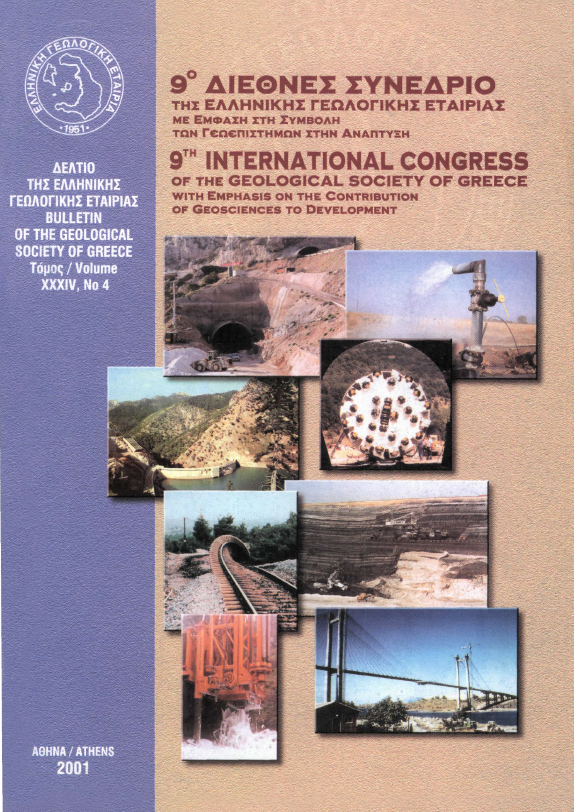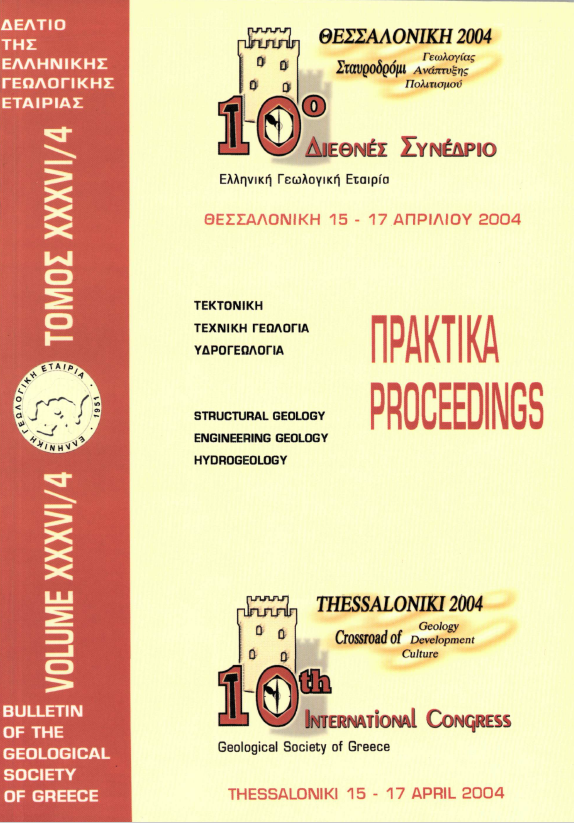The Gujarat, West India, earthquake (Jan 26th 2001). A geodynamic event in an intraplate compressional regime?

Abstract
The Jan. 26, 2001, Ms=7.7 earthquake occurred in Gujarat region of W. India, which lies 200-400 Km away from the active plate boundary zone, between the Indian subcontinent and the Asian plate, along the India-Pakistan border and the Himalayan belt. An Ms=7.7±0.2 earthquake also occurred in the same region in 1819. A zone of co-seismic E-W surface ruptures, 30-40 Km long and 15-20 Km wide, observed near the epicentral area and seems to be associated with pre-existing reverse faults and thrust folds, which were partially reactivated during the recent earthquake. Except the reverse vertical displacement a significant right lateral displacement was also observed along these E-W surface ruptures. This Ms=7.7 seismic event has been also accompanied by a large scale flexural-slip folding, as the absence of significant co-seismic fault displacement and fault scarp shows. This type of compressional tectonic deformation is also confirmed by the focal mechanism of the earthquake and the seismo-tectonic "history" of the area. The NW-SE open cracks, also observed along the same zone, are associated with the right lateral horizontal displacement of the reactivated fault (or branch faults) and the development of local extensional stress field in the huge anticlinic hinges of the co-seismic flexural-slip folds. A large number of ground ruptures, failures and open cracks are also associated with extensive sand boils, liquefaction phenomena and lateral spreading.
Article Details
- How to Cite
-
ΔΑΝΑΜΟΣ Γ. Δ., ΛΕΚΚΑΣ Ε. Λ., & ΛΟΖΙΟΣ Σ. Γ. (2001). The Gujarat, West India, earthquake (Jan 26th 2001). A geodynamic event in an intraplate compressional regime?. Bulletin of the Geological Society of Greece, 34(4), 1405–1415. https://doi.org/10.12681/bgsg.17234
- Section
- Seismology

This work is licensed under a Creative Commons Attribution-NonCommercial 4.0 International License.
Authors who publish with this journal agree to the following terms:
Authors retain copyright and grant the journal right of first publication with the work simultaneously licensed under a Creative Commons Attribution Non-Commercial License that allows others to share the work with an acknowledgement of the work's authorship and initial publication in this journal.
Authors are able to enter into separate, additional contractual arrangements for the non-exclusive distribution of the journal's published version of the work (e.g. post it to an institutional repository or publish it in a book), with an acknowledgement of its initial publication in this journal. Authors are permitted and encouraged to post their work online (preferably in institutional repositories or on their website) prior to and during the submission process, as it can lead to productive exchanges, as well as earlier and greater citation of published work.




